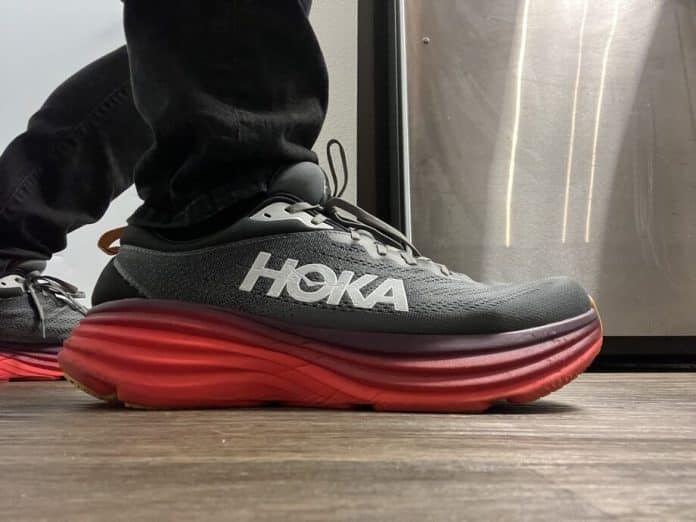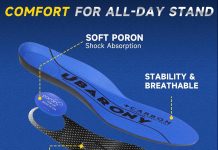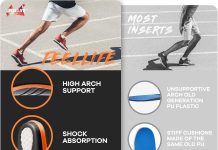As we age, taking care of our bodies becomes increasingly essential, including choosing the proper footwear. Many seniors wonder if there are specific walking shoes designed to meet their unique needs.
After all, comfort, support, and stability are essential to maintaining an active lifestyle. In this article, we will explore the benefits of senior-specific walking shoes and how they can make a significant difference in the overall well-being of older adults. So, if you or a loved one is a senior looking for the perfect pair of walking shoes, keep reading to learn all you need!
There are specific walking shoes designed for seniors that are important in ensuring their safety, comfort, and foot health. As we age, our feet undergo various changes, such as reduced cushioning and decreased flexibility, making walking more challenging.
Therefore, seniors must wear shoes that provide support, stability, and comfort.
In this comprehensive article, we will discuss the importance of proper shoes for seniors, the features to look for in walking shoes, the different types of walking shoes available, specific considerations for senior women and men, tips for choosing the right size and fit, common foot problems in seniors, and tips for breaking in new shoes.
Importance of Proper Shoes for Seniors
Better Balance and Stability
One of the critical reasons why proper shoes are essential for seniors is to improve their balance and stability. Our balance tends to decline as we age, making us more prone to falls and injuries. Wearing shoes with good cushioning and support can help improve stability by providing a solid foundation to walk on. Shoes with a broader base, a sturdy sole, and good traction can greatly enhance balance and reduce the risk of falls.
Reduced Risk of Falls
Falls are a significant concern for seniors, as they can result in serious injuries or even lead to a loss of independence. The right pair of shoes can play a crucial role in reducing the risk of falls. Shoes with non-slip soles or slip-resistant or anti-skid soles provide better surface traction and help prevent slips and falls. Additionally, shoes with adjustable closures, such as laces, Velcro, or buckles, allow for a secure and customized fit, reducing the chances of tripping or stumbling.
Improved Comfort and Foot Health
Comfort is of utmost importance, especially for seniors who may have sensitive or painful feet. Properly cushioned shoes can absorb shock and reduce the impact on joints, providing a more comfortable walking experience. Additionally, shoes with a wide toe box can accommodate foot deformities like bunions or hammertoes and reduce pressure on the toes. Furthermore, using shoes made from breathable materials allows for proper airflow, reducing the chances of foot odour and preventing moisture buildup, which can lead to fungal infections.
Features to Look for in Walking Shoes for Seniors
When selecting walking shoes for seniors, several key features can enhance comfort, support, and overall foot health.
Arch Support and Cushioning
Proper arch support is crucial for seniors, as their arches tend to flatten and lose elasticity with age. Look for walking shoes with adequate arch support to minimize foot fatigue and provide stability. Additionally, cushioning in the midsole and heel can enhance shock absorption, reducing the impact on joints and making walking more comfortable.
Non-Slip Soles
To prevent slips and falls, choosing shoes with non-slip soles or outsoles that provide good traction on various surfaces is essential. Look for shoes with rubber soles or tread patterns that offer reliable grip, especially on wet or slippery surfaces.
Wide Toe Box
As seniors may develop foot conditions such as bunions or hammertoes, shoes with a wide toe box can provide ample room for the toes, minimizing pressure and discomfort. A tight or narrow toe box can exacerbate foot problems and cause pain or deformities.
Adjustable Closure
Shoes with adjustable closures, such as laces, Velcro straps, or buckles, are highly recommended for seniors. These closures allow for a customized and secure fit, preventing the shoe from slipping or causing discomfort. They also accommodate any swelling that may occur throughout the day.
Lightweight and Flexible
Walking shoes for seniors should be lightweight and flexible to ensure ease of movement. Stiff or heavy shoes can impede natural foot motion and cause discomfort. Look for shoes made from lightweight materials and flexible in the sole and upper.
Breathable Material
Choosing shoes made from breathable materials, such as mesh or leather, is essential for maintaining foot health. Breathable materials allow for proper airflow, preventing excessive sweating, foot odor, and fungal infections. Additionally, shoes with moisture-wicking properties can help keep the feet dry and comfortable during extended periods of walking.
Types of Walking Shoes for Seniors
Several types of walking shoes are available for seniors, each catering to specific needs and preferences. Depending on individual requirements, seniors can choose from the following types of walking shoes:
Athletic Walking Shoes
Athletic walking shoes are designed for those who engage in regular walking or exercise routines. These shoes offer excellent cushioning, arch support, and stability, making them ideal for seniors who enjoy more active lifestyles.
Orthopedic Walking Shoes
Orthopedic walking shoes are designed to support the feet and alleviate existing foot conditions or pain. These shoes often feature removable insoles to accommodate custom orthotics and additional arch support.
Slip-On Walking Shoes
Slip-on walking shoes are convenient for seniors with difficulty bending or tying shoelaces. These shoes typically have an elasticized opening or stretchable materials to make them easy to put on and take off.
Velcro Closure Walking Shoes
Walking shoes with Velcro closures are another excellent option for seniors with limited dexterity or difficulty with traditional laces. Velcro closures allow for easy adjustment and a secure fit, ensuring comfort and stability.
Specific Considerations for Senior Women
Women have unique considerations when it comes to choosing walking shoes. Understanding these considerations can help senior women find the most suitable footwear.
Extra Support for Arches
It is common for women to have higher arches compared to men. Therefore, senior women may require shoes that support their arches to prevent discomfort and promote proper gait.
Low Heel and Supportive Insole
Many women prefer walking shoes with a slight heel for style purposes. However, it is recommended that senior women opt for shoes with a low or flat heel to minimize strain on the feet and lower legs. Additionally, shoes with a supportive insole can provide extra cushioning and promote proper alignment.
Roomy Toe Box for Bunions
As mentioned earlier, bunions are a common foot problem in seniors, especially women. Shoes with a roomy toe box can accommodate bunions and prevent unnecessary pressure or discomfort.
Cushioning for Sensitive Feet
Senior women may have more sensitive feet due to age-related changes or pre-existing conditions such as arthritis. Look for shoes with ample cushioning to provide extra comfort and reduce the risk of pain or irritation.
Specific Considerations for Senior Men
Senior men also have specific considerations to consider when choosing walking shoes. Understanding these considerations allows senior men to find shoes that cater to their needs and preferences.
Good Arch Support
Like senior women, senior men may require shoes with good arch support. Adequate arch support helps to maintain proper foot alignment and stability, reducing the risk of discomfort or injury.
Sturdy Sole for Stability
As seniors may experience a decline in balance and stability, senior men need to choose walking shoes with sturdy soles. A sturdy sole provides a solid base and enhances stability during walking.
Extra Padding for Achy Joints
Senior men who experience joint pain, particularly in the knees or hips, can benefit from walking shoes with extra padding. The additional cushioning can help alleviate some of the pressure on the joints, making walking more comfortable.
Roomy Fit for Wide Feet
Senior men, like women, may also have wider feet due to age-related changes or foot conditions. Look for shoes with roomy fit or comprehensive width options to ensure proper fit and avoid discomfort.
How to Choose the Right Size
Choosing the right size is crucial in ensuring the proper fit and comfort of walking shoes for seniors. Here are some tips to help you choose the correct size:
Measure Feet Regularly
Our foot size can change over time, so it is essential to measure our feet regularly to ensure an accurate shoe size. Use a measuring tape or visit a shoe store to have your feet measured professionally.
Consider Foot Changes with Age
Our feet may change in size, shape, or width as we age. Take these changes into account when choosing the correct shoe size. Don’t assume that your size will always remain the same.
Try Different Brands and Styles
Different shoe brands and styles can vary in terms of sizing and fit. Trying on shoes from different brands and styles is a good idea to find the one that fits your feet best. Don’t be afraid to try on different sizes, as shoe sizes can vary between brands.
Pay Attention to Width Options
Width is just as important as length when finding the right fit. Seniors with wider feet or specific foot conditions may benefit from shoes with more comprehensive width options. Look for shoes labeled as wide, extra wide, or with specific width measurements.
Importance of Proper Fit
In addition to choosing the right size, ensuring a proper fit is essential for seniors’ overall comfort and well-being. Here are some reasons why a proper fit matters:
Avoid Shoes That Are Too Tight or Too Loose
Too tight-shoes can cause pain and discomfort, leading to foot problems such as blisters, calluses, or ingrown toenails. On the other hand, shoes that are too loose can result in instability, tripping, or falling. Finding a shoe that provides a snug yet comfortable fit is essential.
Allow Room for Toe Movement
When trying on shoes, ensure enough room for your toes to move freely. Your toes should not feel cramped or restricted. Sufficient toe room helps prevent pressure on the toes and promotes proper circulation.
Check for Proper Heel Support
Proper heel support is crucial for stability and walking comfort. When trying on shoes, check that the heel counter (the back part that cups the heel) provides a secure and comfortable fit. Your heel should feel snug and supported, not slipping or rubbing against the shoe.
Common Foot Problems in Seniors
Seniors are more prone to specific foot problems due to age-related changes, underlying health conditions, or inadequate foot care. Here are some common foot problems in seniors and how proper shoes can help:
Arthritis and Joint Pain
Arthritis can cause pain, stiffness, and swelling in the joints, including the feet. Choosing shoes with good cushioning, shock absorption, and support can help reduce the impact on arthritic joints and provide relief.
Bunions and Hammer Toes
Bunions and hammer toes are foot deformities that can cause pain and discomfort. Shoes with a wide toe box can relieve pressure on these deformities and prevent further progression.
Diabetic Foot Care
Diabetic seniors must take extra care of their feet due to the risk of developing diabetic foot complications. Shoes with a wider toe box, cushioning, and a seamless interior can help prevent pressure points and reduce the risk of developing ulcers or other foot injuries.
Plantar Fasciitis
Plantar fasciitis is a common condition characterized by heel pain caused by plantar fascia inflammation. Shoes with good arch support, cushioning, and a firm heel counter can help alleviate pain and provide relief for seniors with plantar fasciitis.
Tips for Breaking in New Shoes
Breaking in new shoes can help ensure a comfortable fit and prevent discomfort or blisters. Here are some tips to break into new shoes:
Start with Short Walks
When you first get a new pair of walking shoes, it is best to wear them for short walks around the house or neighborhood. This allows your feet to gradually adjust to the new shoes without overexerting them.
Wear Thick Socks to Prevent Blisters
Wearing a thicker pair of socks can provide additional cushioning and prevent friction that causes blisters. Thick socks can also help stretch the shoes slightly and mold them to the shape of your feet.
Use Shoe Stretchers for Tight Spots
If you find certain areas of the shoes tight or uncomfortable, you can use shoe stretchers or fill plastic bags with water and place them inside them. This can help stretch and soften the material in specific spots.
Gradually Increase Walking Distance
As your new shoes feel more comfortable, gradually increase the distance and duration of your walks. This allows your feet to adapt to the shoes and ensures a proper break-in period.
Conclusion
Investing in the right walking shoes is crucial for seniors to maintain balance, stability, and overall foot health. Choosing shoes with features such as arch support, non-slip soles, wide-toe boxes, and adjustable closures can significantly enhance comfort and reduce the risk of falls or foot problems.
Different types of walking shoes, such as athletic, orthopedic, slip-on, and Velcro closure, cater to specific needs and preferences. Senior women and men may have unique considerations, such as extra support for arches or roomy fits for wide feet, that should be considered when selecting walking shoes.
Proper sizing and fit are essential to prevent discomfort and foot problems, and seniors should pay attention to width options and follow tips for choosing the right size.
Lastly, seniors should be aware of common foot problems and opt for shoes that address these issues.
By understanding the importance of proper walking shoes and considering these factors, seniors can stay active, comfortable, and safe while enjoying a walk in their golden years.







































